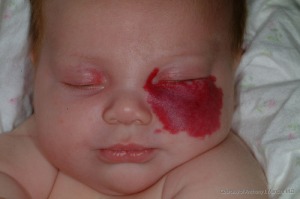Last week I highlighted an important children’s public health initiative undertaken by the American Academy of Pediatrics (AAP). Another public policy statement for children’s welfare was published in the October edition of the journal “Pediatrics.” “Global Climate Change and Children’s Health” is the AAP’s official position on human influence on our warming planet and its impact on children who, by definition, are our most vulnerable citizens.
Now, “climate change” is sometimes characterized as being” controversial” but that term is somewhat misapplied to this subject. It may be “controversial” in a political context as elected officials attempt to address the economic concerns that policy proposals could have on (typically deep pocketed) contributors’ bottom line. But there is no actual scientific controversy but rather a broad based consensus among experts and academics from varied scientific and social fields on the many dangers that this evolving event presents to the world at large and in particular to our children. One can certainly find technical studies in respected, widely read scientific journals with disputes about various aspects of climate change: the depth, breadth, or rate of impact of this phenomon on human habitation and the economic benefits or detriments of doing vs not doing something. But questions of the basic reality of human influenced climate change or that this problem is worsening can not be found in such balanced and nonpartisan sources but rather are placed in lay publications and political forums in our many communications media and their funding sources are increasingly shown to circle back to the various economic players referenced above.
At the risk of sounding self serving, let me say that we pediatricians are generally at least a reasonably smart bunch and we aren’t a bunch of doctrinaire, agenda driven crazies. Our concern is our patients–your children–and the fact that our professional consensus is that human influenced climate change is a danger that must be addressed, in my opinion, should be respected given the cautious, informed, and thoughtful source. There is strong technical data to justify our concern. So if that is an “agenda” that drives us in the AAP (proud member since 1988) then I am unabashedly guilty as charged.
It is certainly NOT my purpose here to push one’s political choices one way or the other. Vote however you like: republican or democrat, vote your conscience or your pocketbook, for the candidate with the best speaking style or for the one who you think understands you best. But the air we breath, the water we drink, and the soil under our feet must be protected for the health, safety, and well being of our children, grandchildren, and descendents beyond. So, please, when you do vote, make sure that you hold the candidates collective feet to the fire on this essential issue.
Thanks for following; please send along questions or comments.








